The Turkish Connection
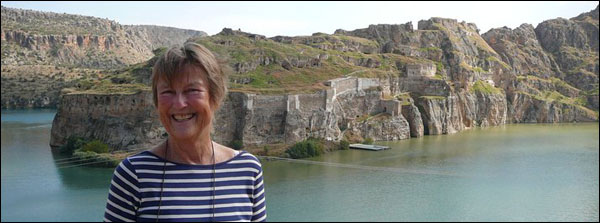
“I’ve done lots of the tourist ‘musts’ with exceedingly great pleasure, but each visit reconfirms that the Turks themselves are the pièce de resistance in the Lucullan feast for all the senses that the City represents.” —Diana Farr Louis
Eating Well Is The Best Revenge
By Diana Farr Louis
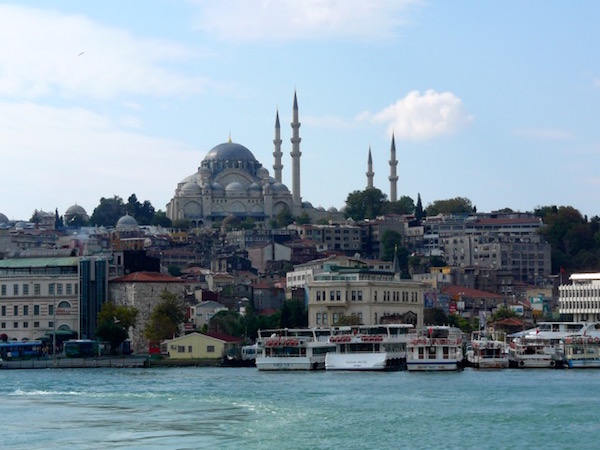
ATHENS Greece—(Weekly Hubris)—11/23/2015—There are only a handful of lokums left in the box I brought back from Istanbul and I’m hoarding them.
They are covered in rose petals and the dark pink gummy interior is studded with whole green pistachios. It took me an age to decide which to select from the shop on Istiklal, a vast, multi-leveled emporium devoted to the full gamut of Anatolian sweets, including an extravaganza of lokums in several sizes as well as flavors. Although I don’t even like sugary things much, I can’t resist genuine Turkish Delight, which is so much stiffer, chewier, and more imaginative than the Greek versions.
Now every mouthful of this outrageous confection takes me back to “the city of the world’s desire,” as some have called Istanbul (or Constantinople, as we in Greece still call it).
It has grown by eight times since my first visit there in the summer of 1965 and, though crowded, it is still enthralling. Then as now I had an insider’s view, with Turks as my hosts. But 50 years ago, my Turkish companion was actually a Jew who’d grown up in Cairo and lived in Paris. I shared her memories and her cousins, who took us on their speedboat to the Princes’ Islands and, in their car, to picnic on the shores of the Black Sea.
Denise told me to beware of Turks, always to enter a cab fanny first since they loved to pinch a beguiling backside. But she was the only Turk ever to take advantage, grasping a hefty chunk of my derrière when she snuck up behind me as I was contemplating the third arm bone of St John the Baptist in a bejeweled reliquary at the Topkapi Museum.
“See,” she grinned. “I warned you Turks were not to be trusted.” She then took my hand and marched me off to the Sultan’s harem.
Since then, I’ve been back three times and done lots of the tourist “musts” with exceedingly great pleasure, from Aghia Sophia to the Bosphoros boat ride, the Blue Mosque, Kariye Çami or Chora Church, the bazaars again and again, and memorable lunches at Pandeli, Çiya, and the fish market. But each visit reconfirms that the Turks themselves are the pièce de resistance in the Lucullan feast for all the senses that the City represents.
Even a Greek, especially a Greek, will tell you this.
Twenty years later, when I went with my husband in the middle of winter, I had learned much more about the complicated, intertwined history of Greeks and Turks: the shifting relationships between rulers and ruled, the Asia Minor Disaster and the population exchanges, the pogroms of the 1950s, Cyprus, and the fact that Aghia Sophia symbolizes the modern Greek spirit far more immediately than the Parthenon. I therefore knew that it took enormous courage for an Athenian to venture into what many Greeks consider enemy territory. But, with me on his arm, “Joy of the People” could pass for an American and not unleash any slumbering resentments.
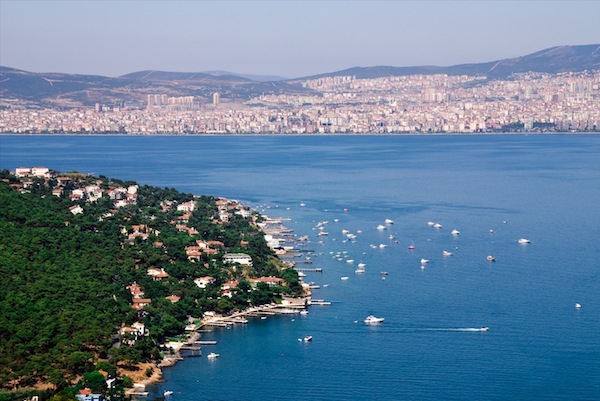
Why did he even consent to go? Curiosity, a bargain offer at the fabled Pera Palace Hotel, an invitation to lunch overlooking the Bosphoros, reports from friends who’d lived to tell about their sojourns?
Suffice it to say that, from the first hole-in-the-wall eatery in a Beyoglu arcade to a luxurious restaurant complete with sommelier near the Dolmabaçhe Palace, every single Turk nearly fell over backwards with surprise when they discovered he was not just an American tourist but a genuine Hellene. And then he was offered drinks on the house, huge discounts, gifts (one fellow diner presented him with his worry beads), and an exasperated “Why didn’t you say so!” Sometimes Turkish strangers even burst into Greek themselves.
I wasn’t to return to Istanbul for another twenty-something years but, in the meantime, I began to know Turks, food-lovers, writers and cooks—Ayfer, Engin, Ihsan, and particularly Filiz—through our membership in the extended Oldways family. Beginning on Crete in 1997, I met them in Liguria, Puglia, Lesvos, Chios, and Salerno over a period of five years, and fell in love with their humor, wisdom, and their version of the Eastern Mediterranean food traditions I had come to think of as my own after so many decades in Greece. The appreciation of good food and what makes it good, from the producers to the kitchen to the table, seems to attract convivial people and creates lasting ties and friendships.
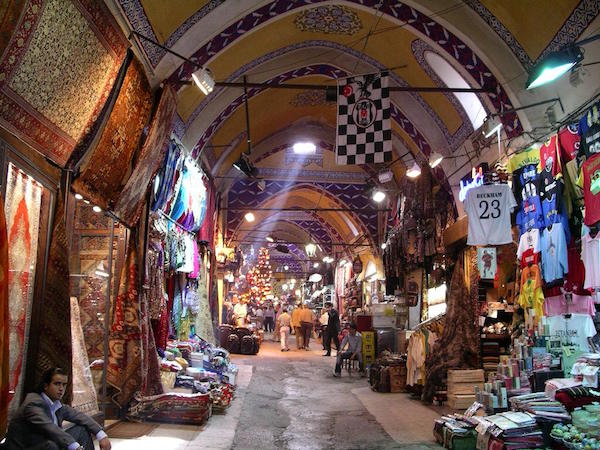
And so it was that 13 years later my dear friend Filiz invited me to her very special home town, Gaziantep, in southeast Turkey, often referred to as the country’s gastronomic capital. I was to represent Greece at an EU youth (!) workshop on Cuisine and Culture (See “Cooking & Feasting in Gazientep, Turkey,”). There, when we were not tasting different renditions of local treats such as lahmaçun and pistachio-filled everythings, we were also cooking our own national dishes; exchanging stories as we chopped, stirred and kneaded.
A few days in Istanbul before and after the workshop reacquainted me with its spires and domes, its bridges and street food, from fried mussels on a stick to tumblers of pomegranate juice, with a hefty dose of memorable encounters, from a Kurdish rug salesman in the Grand Bazaar to a street cleaner near Galata, all friends of my pal and hostess Daisy.
But this most recent long weekend in The City (its eternal nickname, in Greek) was devoted almost exclusively to people and food, for the surprise invitation had come from Culinary Backstreets, formerly known as Istanbul Eats. Convening correspondents from places as farflung as Shanghai, Rio, Mexico City, and Barcelona, as well as Athens, Tblisi, New York, and Gaziantep (i.e., dear Filiz), they infected us with their enthusiasm and introduced us to an Istanbul we could never have discovered on our own. Naturally, we bonded in the process.
Their first move was to load us onto a boat. Bouncing on the Bosphoros as the bridges, towers, and palaces changed color worked a special alchemy as we balanced conversation, wine, and plates in semi-darkness. The next day, we separated and took different tours of the city’s backstreets. Mine was set in Beyoglu, the district split by the main drag Istiklal and near our hotel. And here our handsome, wonderful, charming guide Ugur showed his expertise. Over the course of five to six hours, we not only explored alleys and eateries, we ate our way around the seven regions of Turkey, beginning with breakfast in Van, swooning over water buffalo clotted cream, moving on to the Black Sea and its anchovy dishes, stopping for böreks (little pies), pickles, chicken breast custard, a carefully dissected lamb’s head, baked quinces . . . and ending with Ugur telling our fortunes from the sludge in our coffee cups.
Some of these places were too small to step into; some had only a couple of tables; the lamb’s head man worked from a table in front of a butcher/rotisserie next to a café. With their bare white walls, white tiled floors, and faded Ataturk photos, they looked totally uninviting. Who could have suspected such exquisite food, or such a warm welcome?
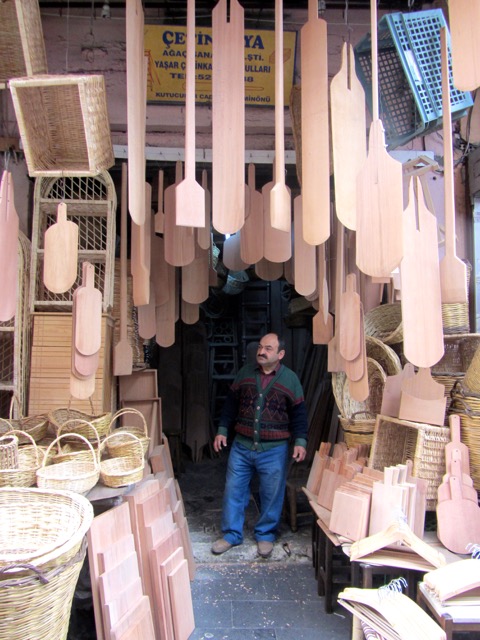
My second tour, from Eminonu, in back of the Spice Market to a Kurdish district near the Aqueduct, took us into seedy, working-class lanes of shops whose baskets, brooms, party decorations, dangling peppers, garlic braids, kebab rotisseries, chilli pyramids, and even bread paddles left little room to walk though. The Athens equivalent that I’m so fond of seems skimpy by comparison.
Stopping every 50 steps for a bite, our willowy guide Remsiye said, “Don’t feel you have to eat everything. You won’t be punished.” But how could we not when every single establishment no matter how tiny promised a new culinary experience enhanced by a story—about the vendor’s past, the shop’s history, the food’s preparation or its origins.
What lingers on the palate? The tomato-laced doner kebab, the pistachio/phyllo crème brulée cousin, the perfect kibbe, the dough encrusted pilaf shaped like a fez, and the only thing I did not appreciate: the drink made out of fermented millet served in a vintage café almost unchanged since 1876 and decorated with memorabilia including the very glass Ataturk once used.
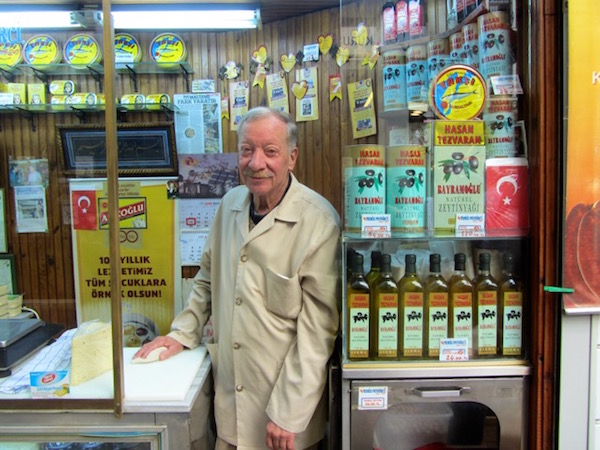
But even more sharply etched on my memory are the kindly face of the older man who sold us breakfast, the meraki/merakli (love and passion) of the woman who turned a hundred-year-old house in Beyoglu into the beautiful Heirloom Café, Remsiye’s tales of her demanding father and growing up in Dusseldorf, the red flags and pennants hanging across alleys, streets, and boulevards—a demonstration not of patriotism but of mourning for the victims of the Ankara bombings ten days earlier—the many, many words that Greeks and Turks share along with the feeling that neither of our countries is in good hands at the moment.
I left, though, feeling that in Culinary Backstreets (CB) I had a new extended family that shared the values we had nurtured with Oldways. Like them, CB supports artisanal foods, preserves neighborhood institutions by bringing attention to the “little” people and places that deserve it and the stories that make the eating experience more intimate. They foster “honest tourism,” and raise money for causes they believe in.

At our last meal together, a working “elevenses”—think glass after glass of tea accompanied by cookies—followed by a Circassian lunch, our hosts, Ansel Mullins and Yigal Schleifer, and the spokespeople for each city talked about the problems all face. Big business, malls, and financial, political, and social crises seem to be threatening traditions and foodways everywhere, making our jobs as journalists and guides even more crucial.
Eating your way around a foreign destination is not just about stars or chains, name brands and tourist traps. And even a few unadulterated tastes of what’s real will give genuine travellers a glimpse of a city’s heart.
![]()
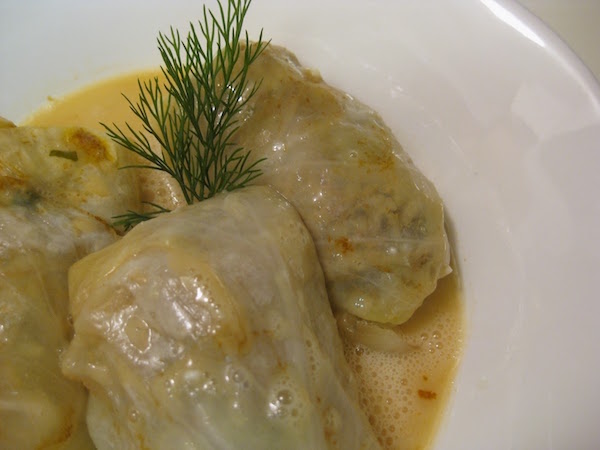
Recipe
During our final meeting, one of our Turkish colleagues said, “We stuff everything that has a hole and, if it doesn’t have one, we make one.” Greeks (and most Middle Easterners, too) have the same culinary habits, and they also wrap leaves of all kinds around the same kind of stuffing. Here is a Cretan recipe that could be Turkish.
They even have almost the same name:
Etli Lahana Dolmasi, Lahano Dolmades,
or Stuffed Cabbage
1 large green cabbage
1/2 kg (1 lb) ground beef or lamb
1 medium onion, finely chopped
120 ml (1/2 cup) olive oil
200 grams (1 cup) long grain rice
2 tablespoons each chopped dill, mint, and parsley
juice of 1 lemon
For the egg-lemon sauce:
1 tablespoon flour
60 ml (1/4 cup) fresh lemon juice or more
2 small eggs, beaten
Parboil the cabbage in plenty of water for about 10 minutes. Drain and, when cool enough to handle, carefully separate the leaves from the cabbage head. Lay on paper towels or dish towels to dry and slice off thick ribs near the stem ends. The leaves should be soft and floppy enough to roll. If some of the inner ones have remained crisp, parboil them again for 2 minutes.
Heat 3 tablespoons of olive oil in a large, heavy frying pan and gently sauté the onion until soft and translucent. Add the chopped meat and brown until all traces of pink vanish. Let cool and then mix in the other ingredients.
Oil the bottom of a large saucepan and then line it with torn or unstuffable cabbage leaves. To stuff the leaves, put a tablespoon of filling in the middle of each leaf about 4 cm (1 ½ inches) from the wide end, fold the bottom over the filling and roll towards the top, folding the sides towards the center as you go. If the leaves are very large, cut them in half with scissors. Lay the stuffed leaves seamside down in the pan. Repeat the procedure until you have used up all the stuffing. Pour in the remaining olive oil, lemon juice, and some water until the liquid is about halfway up the dolmades, and strew any unused leaves over them. Place an old plate on top of the cabbage rolls to keep them from unravelling, bring to the boil, cover, and simmer for about 1 hour.
Remove the cabbage rolls to a platter, reserving their liquid, and set in the oven to keep warm while you make the egg-lemon sauce.
Beat the eggs with the lemon juice in a small saucepan. Slowly beat in several tablespoons of liquid from the cabbage rolls and then add to it all the remaining liquid. Heat the sauce very gently, stirring all the while, until it thickens to the consistency of thin custard. Serve the cabbage rolls and sauce separately. Serves 4-6.

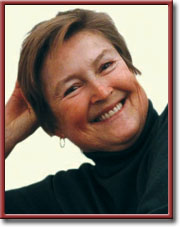
6 Comments
Anita Sullivan
Wow! Gasp! and Yumm! I am reeling from your rich descriptions of food and hospitality. Thank you for this heartening and stimulating guide through the legendary city with two names!
diana
thanks, anita mou, always love your columns too
Georgia Kofinas
Oh, dear…..you really stirred up my culinary nostalgia!! And although I’ve “been there-done that” your description and talent in writing made it all seem so new and exciting! Can’t wait to talk about this over lunch!!!
Helen Noakes
Diana, as always, your essays leave me salivating for a taste of the wonderful treats you describe, and here, you’ve outdone yourself. Not only have you stirred memories of wonderful meals in Istanbul, from Pandeli’s to the little hole in the wall eatery near the mosque housing the tomb of Job, but for the varied and colorful culture in Turkey. I admit, I’m one of those Greeks who, having heard horror stories of the massacred in Izmir, approached Turkey cautiously. My family, you see, lived there when Istanbul was called Constantiopoli, and continued to live there for years, until that fateful time. But my grandmother’s cooking remained that of a Plitisa, and I’m grateful that she taught me to cook that way as well. Thank you for stirring up good memories, my friend.
diana
Many thanks, Georgia and Helen. G and I will get to talk about shared memories face to face, but I am longing to read more of your own stories, Helen mou. I’m so thrilled my own very truncated ones here struck a chord. And how marvelous it must have been to be raised on Politiki Kouzina instead of the meat and two veg routine that nourished but hardly nurtured me.
Engin Akın
Cheers for a lovely article!!! The first time I tasted “boza” my palette responded with curiosity…Ever since, first to satisfy my curiosity, later, to savor this curious ancient drink. I change my route to have one glass smothered with cinnamon! Have a another glass Diane, a good chance you may become an addict… See you soon!